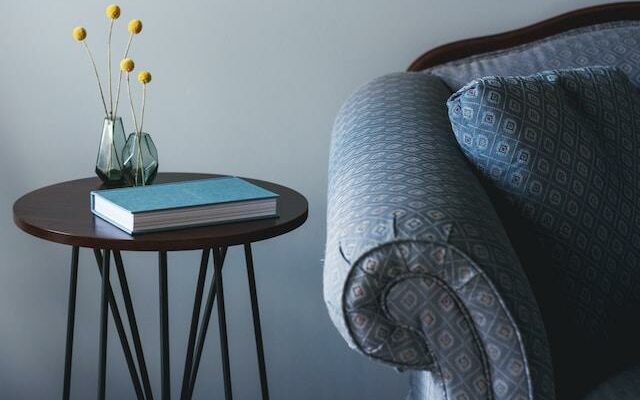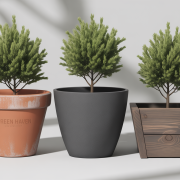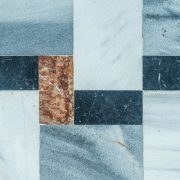Texture can impact how a room looks and feels – it appeals to the touch and eye. A room without texture can feel flat, uninviting, and unfinished, so before you start any decorative nip/tuck, look at the room as a whole with fresh eyes. It’s a way of adding depth and dimension, not to mention comfort. Whether made of plastic or shiny metal, anything has its own texture. They provide the eye with something interesting to look at and help you achieve a cozy and comfortable atmosphere. The intricacies of texture are one of those areas that are easy to overlook. Your decisions should have a level of consciousness, so think things through.
When it comes to dressing a room, you should consider the following suggestions.
Mix And Match Patterns Like A Pro
Playing with different textures adds immediate interest to any space in your home, so get to know the most essential weave types. Plain, tabby, or weave are the simplest and most common weaves; they require just two harnesses and have two warp and weft yarns in each weave unit. Jacquard weave, a type of fabric woven on a jacquard loom, is defined by a complex design, frequently with large design repeats or tapestry effects. What makes jacquard stand out is the complex patterns; they’re an integral part of the fabric, meaning they’re not added later on. For this reason, the jacquard weave is less likely to warp or fade with time.
You can use a combination of textiles, such as leather, silk, velvet, cotton, linen, bouclé, or wool. At the end of the day, it’s all about mixing things up. It goes without saying that too many textures can be an unpleasant or ugly sight. Nonetheless, too little consistency can make a room feel lifeless and boring. Contrasting colors make a bold statement and create a stunning design, so take advantage of combinations like purple and yellow, black and white, or orange and blue. You can also focus on shapes to create contrast. Being in tune with your personal style makes the process much smoother, so consider your lifestyle, feelings, and so on.
To Strike a Balance, Avoid Overdoing It with Pillows
Pillows are an easy way to add texture to a room, breaking up the monotony and refreshing the entire ambiance. Layering pillows is something you’ve been doing for some time now; it’s just you never realized it was a design concept. Use multiple pillows in the same color scheme but with different fabrics so each one has a unique texture. There are so many options to choose from, ranging from bouclé floor pillows and poufs to faux leather lumbar pillows. You can obtain a layered look by using several textures in the same or similar shade or using different textures in various heights and sizes.
Try A Tonal Look
Tonal decorating implies using just one color and various saturations of that color throughout the space. An all-white room would look boring, bland, or just a bit vanilla if everything was decorated in the same tone of white. This is why it’s recommended to use several shades, from snow white to cream, eggshell, and ivory. A room can be radically transformed by lightening or darkening the color. It’s a technique that can be used throughout the home, whether it’s the bedroom, bathroom, kitchen, or living room. Leverage natural light to showcase the seemingly infinite variations of your tonal palette.
There will always be a need for a traditional look, but there are plenty of ways to spice up your home décor. A single color doesn’t translate into the fact that you have to stick to a muted scheme; on the contrary, you can create an energetic room using various tones. It doesn’t have to be white. You can use blue. Different textures can evoke different feelings and emotions, such as sophisticated, calm, playful, cozy, and so on. As an example, you can mix smooth, woven, fur, shiny, lumpy colors and patterns to create a modern and elegant vibe.
Decorate With Plants and Flowers
You can add texture to your interior design via the use of plants and flowers. They add another dimension. There are plenty of elements to take into account, such as shape, color, size, height, etc., when it comes to creating a fantastic look. Seek plants and flowers that connect to other elements in the space, like the verdant green leaves of a palm tree that bond with the vintage lacquered furniture. Plants and flowers are inherently textured, so the more you add to your home, the better. Combining different textures draws the eye around the place and makes a dull space more attractive.
Use Artwork to Decorate the Walls
Last but not least, you can use wall art to add texture to the room you want to transform. It doesn’t matter if you like bright, bold colors or you’re attracted to neutrals – texture is often overlooked. Even the simplest wall treatment can have a huge impact. Nothing adds personality like a gallery wall, but pulling one together can feel like a daunting task. Use simple, cohesive frames or take advantage of ornate variations to spice things up. Play around with the wall art placement for as long as you like; don’t be afraid you’ll damage the walls. You can add a pop of color with tapestry. It can be hung anywhere, even in rental spaces. If you’re trying to avoid holes in the walls, use self-adhesive Velcro.
Conclusion
As part of your design plan, you should know what reality you want to create. Only then can you determine what textures to include. If you’re not afraid to switch up your décor, use huge textures to bring an unexpected pop of personality to the space. It will elevate your interior to the next level. Attention must be paid to the fact there’s no one-size-fits-all solution, so think about what works best in your space. What are you envisioning for your home? You can schedule an appointment with an interior designer.













Comments